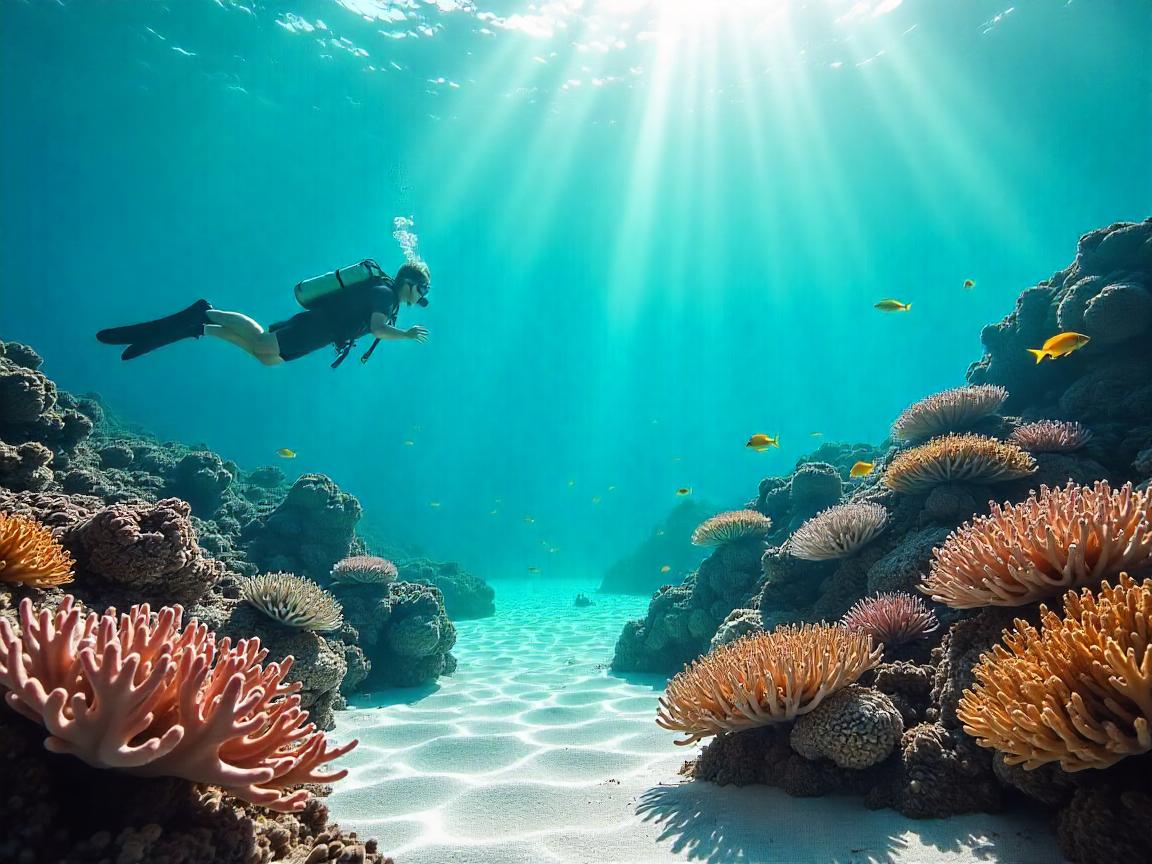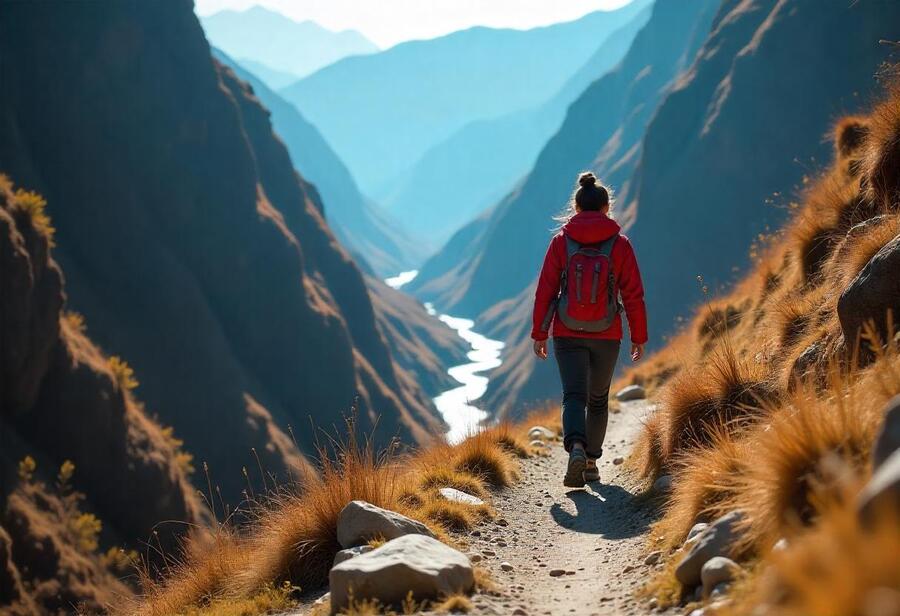≡-Serbia, France, Thailand, UK, Indonesia and Many in the List, How Rising Pollution Levels Are Rewriting Global Tourism Maps, Here is a New Update – Viral of Today
<> Viral of Today <>
Home » Australia Travel News » Serbia, France, Thailand, UK, Indonesia and Many in the List, How Rising Pollution Levels Are Rewriting Global Tourism Maps, Here is a New Update Saturday, July 12, 2025Tourism is undergoing a silent upheaval as rising pollution levels begin to redraw travel maps around the globe. Destinations once celebrated for their natural beauty—like Australia’s Great Barrier Reef—now grapple with bleached corals and warming waters. In Serbia and France, hidden chemical threats in rivers are casting doubt on long‑standing reputations for clean, scenic escapes. Thailand’s vibrant cities flitter between sunlit promise and smog‑choked skies, while the UK faces growing alarm over invisible “forever chemicals” in its waterways.Across Indonesia, the toxic currents of rivers like the Citarum threaten both visitor safety and environmental credibility. These unfolding crises are doing more than tarnishing postcards; they are reshaping tourist preferences, health considerations, and destination priorities. In this new update, we explore how pollution is shifting travel behavior—and how industry leaders are responding to protect both travelers and the places they love.Pollution and the New Reality for TravelersFor decades, travel was about chasing the beautiful, the exotic, and the unknown. But in 2025, pollution has emerged as a force reshaping how people choose where to go, how they travel, and even what they breathe when they get there.Air thick with smog, rivers flowing black with toxins, and coral reefs bleaching away are no longer distant environmental issues—they’re becoming deciding factors in trip planning. From Asia’s megacities to Europe’s rivers, pollution is leaving a mark on tourism like never before.While some destinations battle alarming environmental crises, others are seizing the opportunity to position themselves as safe havens for travelers craving clean air, clear waters, and a sustainable future.South Asia Under a Choking HazeFew regions are as dramatically affected as South Asia. Bangladesh, for instance, tops global charts for air pollution, with PM2.5 levels averaging between 78 and 83 micrograms per cubic meter—far above the World Health Organization’s safe limit. Dhaka’s skyline often disappears behind dense, grey smog, while its rivers overflow with industrial waste.Travelers considering Bangladesh are increasingly wary. Adventure tourism still draws some visitors, but pollution is forcing tour operators to adjust itineraries. The peak season once bustled with cultural explorers; now it’s overshadowed by health warnings and air quality advisories.Neighboring Pakistan grapples with similar challenges. Lahore and Karachi regularly record hazardous air days. For travelers, this means reconsidering trips during winter smog seasons and being cautious even in rural regions where arsenic contaminates groundwater.India, too, faces a sobering reality. Despite vibrant festivals, historical wonders, and diverse landscapes, six of the world’s nine most polluted cities are in India. For tourism boards, promoting safe travel is a delicate balance between showcasing the country’s rich heritage and acknowledging the risks pollution poses to visitor health.Southeast Asia’s Rivers Run ToxicSoutheast Asia tells another tale. While cities like Bangkok attract millions of visitors each year, the region faces severe environmental pressures. In early 2025, Bangkok suffered a dramatic smog crisis, pushing air quality to dangerous levels. Travelers were advised to avoid outdoor activities, a blow to Thailand’s tourism-dependent economy.In Indonesia, pollution runs deeper—literally. The Citarum River, once a lifeline for communities, is now considered the world’s most polluted river, choked with industrial chemicals and plastic waste. Tourists used to boat along its waters, soaking in the lush scenery. Today, operators struggle to convince visitors it’s safe.Meanwhile, the Philippines faces water pollution on a daunting scale. Nearly 58% of the country’s groundwater is polluted. The iconic Pasig River, flowing through Manila, remains one of the most polluted rivers worldwide, despite years of clean-up campaigns. This taints not only city tours but also beach resorts where water quality can fluctuate.Europe’s Hidden Chemical ThreatEurope, despite its image of rolling green hills and pristine waters, is battling its own pollution demons. The United Kingdom has been rocked by revelations of widespread PFAS contamination—so-called “forever chemicals”—in rivers, lakes, and even farmland sludge. These invisible threats don’t cloud the skies like smog, but they pose long-term health risks and stir anxiety among travelers seeking clean, safe destinations.In France, the town of Saint-Louis faced a startling crisis in 2025 when tap water was declared unsafe due to excessive PFAS levels. Residents had to rely on bottled water, and news of the contamination rippled across European media. For tourists, such headlines erode confidence in destinations previously considered safe.Even the Seine River, a symbol of Parisian charm, has been caught in the chemical crossfire, with high levels of pollutants reported. Travelers dreaming of riverside strolls or Olympic swimming events now grapple with the reality that environmental safety can’t be taken for granted, even in Europe’s tourism capitals.Australia’s Natural Wonders Under SiegeAustralia’s tourism industry thrives on its pristine image, but cracks are appearing. The Great Barrier Reef, one of Earth’s most breathtaking natural wonders, is suffering new waves of coral bleaching driven by warming seas and pollution runoff. UNESCO has warned that the reef could soon be listed as a “World Heritage in Danger” site.For travelers, the impact is deeply personal. Many dream of snorkeling among vibrant coral gardens. Now, tour operators are fielding anxious questions about reef health, and eco-tourism ventures scramble to balance sustainability with economic survival.Beyond the reef, warming rivers across Australia are triggering fish kills and algal blooms, a stark reminder that climate and pollution crises don’t just affect distant ecosystems—they shape entire travel experiences.Clean Air Becomes a Travel AssetAgainst this backdrop of pollution crises, some nations are emerging as unexpected tourism winners. Countries like Iceland, Estonia, Australia (despite reef concerns), and New Zealand have some of the cleanest air on Earth, meeting the World Health Organization’s stringent PM2.5 targets.Travelers are increasingly drawn to places where they can breathe freely, drink tap water without worry, and explore natural landscapes unspoiled by industrial contamination. Iceland, for example, promotes itself not only as a land of fire and ice but as a sanctuary for health-conscious visitors escaping urban pollution.Destinations with clean environments are seizing this marketing opportunity. Tourism boards emphasize sustainable experiences, eco-lodges, and low-impact adventures, tapping into travelers’ growing environmental awareness.A New Priority for Global TravelersIn the past, travelers chased after the world’s tallest peaks, the bluest seas, and the brightest city lights. But in 2025, a new factor is rapidly reshaping the global travel map: clean air and unpolluted water.Around the world, environmental crises have reached a tipping point. Smog-filled skylines, chemical-tainted rivers, and plastic-choked coastlines have become grim hallmarks of once-beloved destinations. For many travelers, especially families and health-conscious explorers, pollution has become a dealbreaker.In this new era, the true luxury isn’t just a five-star suite or a secluded beach—it’s the chance to breathe deeply without worry and drink water straight from the tap.Only a handful of places around the world are achieving what once seemed impossible: near-zero pollution. These countries and regions are emerging as new stars on the tourism horizon.The Clean Air ChampionsOnly seven countries currently meet the World Health Organization’s gold standard for air quality: Australia, New Zealand, Iceland, Estonia, Grenada, Bahamas, and Barbados. These destinations enjoy annual PM2.5 levels at or below 5 micrograms per cubic meter—a figure nearly unimaginable for smog-heavy cities in Asia, Europe, and North America.Australia and New Zealand, long celebrated for dramatic landscapes and adventurous spirits, now have another badge of honor: clean, breathable air. For travelers who’ve spent years masking up in polluted cities, the simple freedom of crisp mountain breezes or salty coastal winds feels revolutionary.Iceland, too, has risen as a dream destination. Its volcanic landscapes, steaming blue lagoons, and northern lights spectacles are made even more appealing by an atmosphere almost untouched by pollution. Visitors marvel not only at the natural beauty but at how fresh every breath feels.Small island nations like Grenada, the Bahamas, and Barbados are also leveraging their clean credentials. While they’ve always drawn tourists with palm-fringed beaches, they’re increasingly marketing themselves as sanctuaries where wellness and environmental purity go hand-in-hand.Europe’s Quiet Leaders in Clean LivingBeyond the top seven, several European nations stand out for clean air and progressive environmental policies. Countries like Sweden, Finland, Denmark, Norway, and even the United Kingdom are frequently just shy of WHO’s strictest guidelines.Scandinavia, in particular, offers travelers a rare combination: urban sophistication and natural purity. Cities like Stockholm and Oslo boast clean streets, efficient public transport, and parks teeming with life. Meanwhile, the surrounding countryside features crystal-clear lakes and pine-scented forests perfect for eco-tourism.In Switzerland, travelers can swim in urban rivers like the Aare in Bern or Lake Geneva without hesitation. Once, that would have been unimaginable in European cities, but Swiss commitment to water purification and environmental protection has transformed its waterways into living tourism assets.These European leaders are increasingly promoting “clean travel” packages, inviting visitors to explore sustainable experiences, from hiking and cycling to eco-friendly urban tours.Islands in the Stream of Clean AirIslands scattered across the Atlantic and Pacific are also emerging as pollution-free gems. Places like French Polynesia, Mauritius, Bermuda, and Puerto Rico boast exceptionally low air pollution, often driven by steady ocean winds and minimal heavy industry.Travelers to these islands discover more than sun and sand. They find a serenity born from knowing the air they breathe is among the cleanest on Earth. Wellness resorts, eco-lodges, and sustainable retreats are booming in these regions, as visitors seek a holistic escape from polluted urban life.This shift isn’t just about relaxation—it’s about health. For those with respiratory conditions, families with young children, or travelers simply weary of modern cities’ invisible threats, these islands offer both peace of mind and breathtaking scenery.The Rise of Environmental Consciousness in TourismThe surge in popularity for zero-pollution destinations reflects a broader change in traveler priorities. Tourists are becoming environmental consumers. They want assurance that their chosen destination aligns with sustainability and doesn’t pose hidden health risks.It’s not just about beautiful photos anymore—it’s about what those photos can’t show. Is the air safe to breathe? Is the water clean enough to drink or swim in?Tourism boards across clean destinations are keenly aware of this trend. Marketing campaigns increasingly highlight air quality indices, water safety certifications, and green credentials. “Come Breathe with Us” might sound poetic, but in 2025, it’s a powerful selling point backed by science.Economic Advantages of Staying CleanDestinations that protect their environments stand to reap major economic rewards. As pollution continues to degrade tourism hotspots elsewhere, clean countries and regions become more valuable.A study by the European Travel Commission in 2025 revealed that destinations with excellent environmental ratings saw a 17% higher booking rate than those with moderate or poor air quality scores. Travelers are willing to pay more for peace of mind—and experiences that nourish both body and soul.Moreover, clean destinations often attract high-spending eco-tourists. These visitors seek meaningful travel, longer stays, and authentic connections with local cultures, benefiting both large tourism operators and local businesses.The Challenge of Staying CleanHowever, maintaining zero-pollution status is no small feat. Countries like Australia and New Zealand, though leaders in clean air, still face localized challenges from wildfires and agricultural runoff. Iceland must balance tourism’s explosive growth with its fragile ecosystems.Even small island nations can find themselves threatened by plastic waste washing ashore from distant countries. Pollution knows no borders, and staying clean demands constant vigilance, strong regulation, and community engagement.The Future of Travel in a Polluted WorldLooking forward, it’s clear that environmental purity will be a defining theme of global tourism. Travelers will increasingly vote with their wallets, choosing destinations that safeguard both their health and the planet.For countries still battling heavy pollution, the message is stark. Without decisive action, they risk losing billions in tourism revenue as visitors seek cleaner alternatives.Meanwhile, nations that protect their skies, rivers, and landscapes are not just preserving natural treasures—they’re investing in an economic future built on sustainability and trust.A New Era of Conscious TravelThe world of 2025 is full of contrasts. In some places, pollution darkens horizons and drives tourists away. In others, clean air and water are precious assets drawing travelers from across the globe.For those chasing the purest experiences, the journey has shifted. It’s not just about where you go—but whether the air you breathe and the water you touch are truly clean. In the race to attract tomorrow’s travelers, zero-pollution destinations are quickly emerging as the brightest stars on the map.Health Precautions and Travel PlanningFor modern travelers, pollution isn’t just an inconvenience—it’s a serious health consideration. Tourists are now researching air quality indexes before booking flights. Travel insurance policies increasingly cover trip changes due to hazardous pollution levels.Operators are responding. Some tours in South Asia now provide air-filter masks. Cruise lines adjust itineraries away from polluted ports. Hotels highlight air purification systems in their marketing materials.Even in Europe, where chemical threats are less visible, travelers are asking questions about drinking water safety and local contamination issues. The once taken-for-granted sense of environmental security is now a key part of travel planning.A Tipping Point for Global TourismThe story of travel in 2025 is no longer just about exploring new cultures or ticking off bucket-list destinations. It’s about navigating a world where environmental crises touch every continent, every city, and every journey.For some destinations, pollution threatens their tourism lifeblood. For others, it opens opportunities to shine as clean, safe havens. What’s clear is that travelers are paying attention—and the tourism industry must adapt quickly.As pollution continues to shape travel choices, the industry faces a profound reckoning. Future travelers will demand not only stunning sights and memorable experiences but proof that their journeys won’t cost them their health—or the planet’s.
This information will surprise you!
See also
- Read until the end to discover everything.
- Important information you need to know.
- Interesting facts and helpful tips.
Conclusion
Did you enjoy the news? Keep following us daily!













